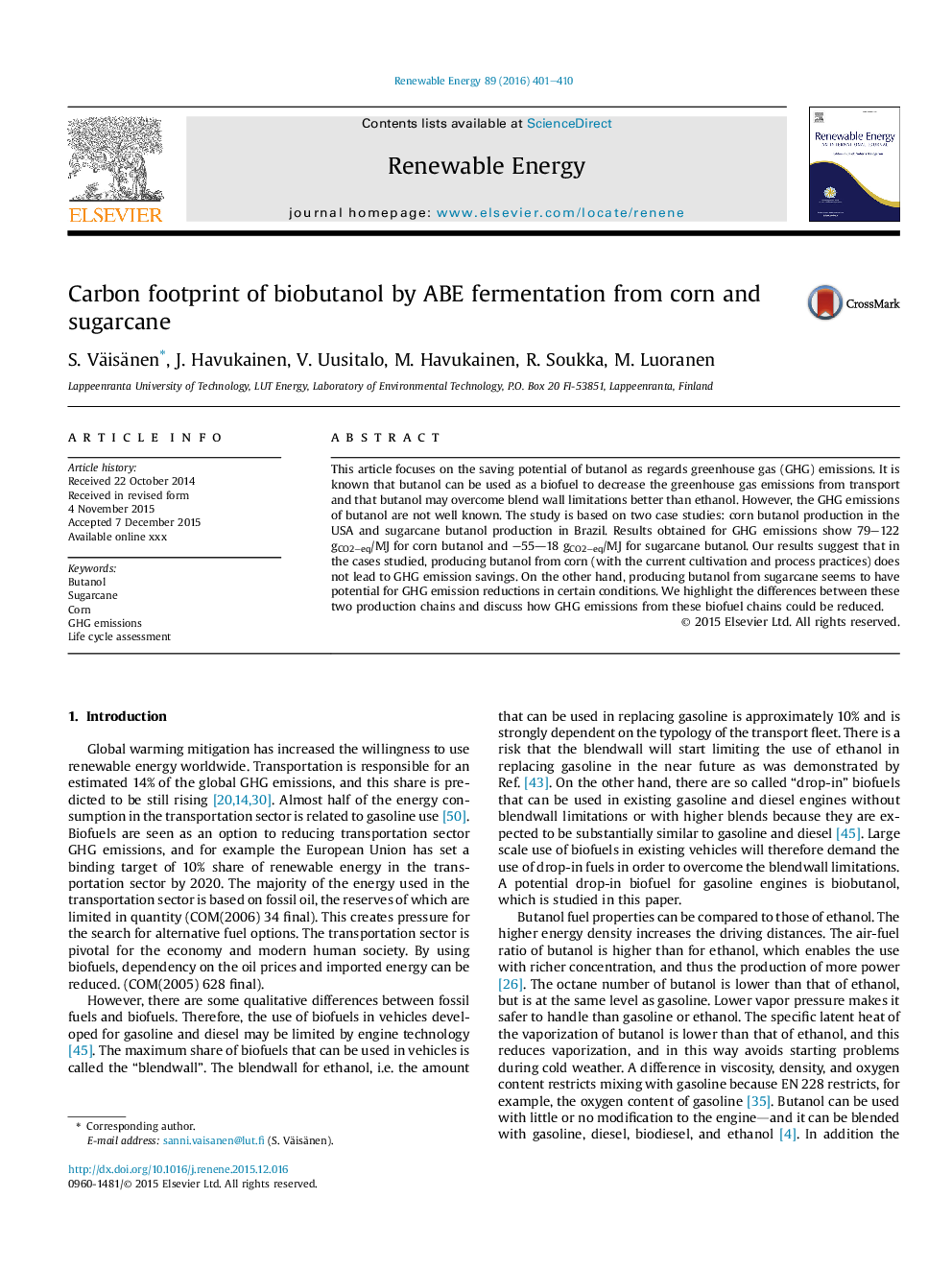| Article ID | Journal | Published Year | Pages | File Type |
|---|---|---|---|---|
| 6766297 | Renewable Energy | 2016 | 10 Pages |
Abstract
This article focuses on the saving potential of butanol as regards greenhouse gas (GHG) emissions. It is known that butanol can be used as a biofuel to decrease the greenhouse gas emissions from transport and that butanol may overcome blend wall limitations better than ethanol. However, the GHG emissions of butanol are not well known. The study is based on two case studies: corn butanol production in the USA and sugarcane butanol production in Brazil. Results obtained for GHG emissions show 79-122 gCO2âeq/MJ for corn butanol and -55-18 gCO2âeq/MJ for sugarcane butanol. Our results suggest that in the cases studied, producing butanol from corn (with the current cultivation and process practices) does not lead to GHG emission savings. On the other hand, producing butanol from sugarcane seems to have potential for GHG emission reductions in certain conditions. We highlight the differences between these two production chains and discuss how GHG emissions from these biofuel chains could be reduced.
Related Topics
Physical Sciences and Engineering
Energy
Renewable Energy, Sustainability and the Environment
Authors
S. Väisänen, J. Havukainen, V. Uusitalo, M. Havukainen, R. Soukka, M. Luoranen,
